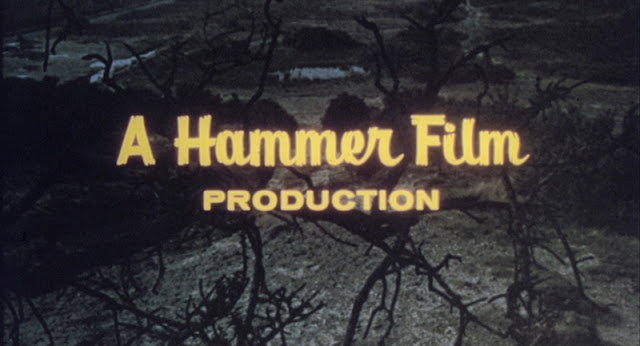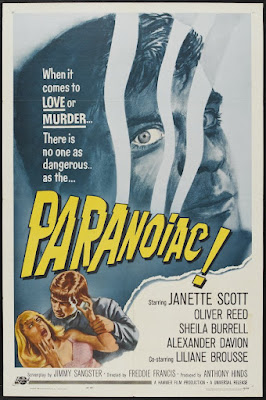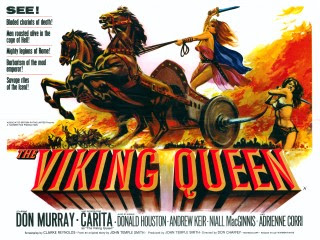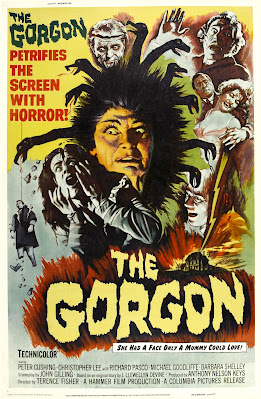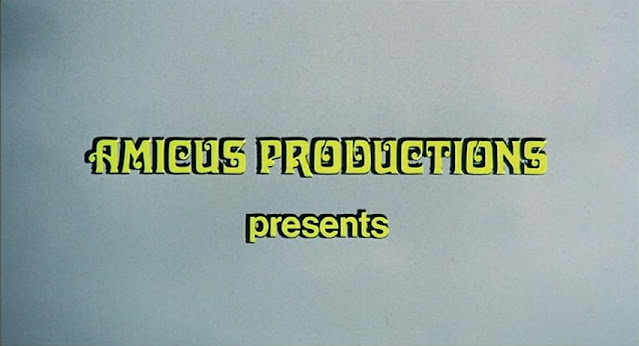(1966) Directed by John Gilling; Written by John Elder; Starring:
Noel Willman, Ray Barrett, Michael Ripper, Jennifer Daniel, Jacqueline Pearce, John
Laurie and Marne Maitland; Available on Blu-ray and DVD.
Rating: ***½
First of all, congratulations are in order for my superb
co-host, Gill Jacob from Realweegiemidget Reviews,
for co-hosting a fourth (!) edition of the Hammer-Amicus Blogathon,
delving further into the wealth of cinematic delights from both esteemed production
companies. Be sure to check out all the wonderful posts!
“Mr. Spalding, I was a professional seaman, and I too, have
knocked around the world a bit, but I’ve seen things that your logic could not
explain away.” – Tom Bailey (Michael Ripper)
“It was hell… I spent a couple of hours in makeup every
morning. I could only shoot every other day because taking it off would leave
my skin so raw. I wasn’t comfortable in that at all.” – Jacqueline Pearce (excerpted
from Hammer Glamour, by Marcus Hearn)

As any music enthusiast would likely attest, the B-side can
be just as intriguing, if not more so, veering in directions that would be unthinkable
for a potential hit single. Intended to be the second film on a double bill
with Rasputin the Mad Monk (1966), The Reptile is a second
feature that’s anything but secondary. It was the last in a series of four
films that were shot back-to-back (preceded by Dracula: Prince of Darkness,
Rasputin the Mad Monk, and Plague of the Zombies), as part of producer
Anthony Nelson Keys’ cost-cutting experiment.* Production started only a week
after shooting for Plague of the Zombies ceased. Bernard Robinson’s lavish set
design (employed on a shoestring) cleverly concealed the film’s low-budget
origins.*** Director John Gilling claimed to have rewritten John Elder’s** script
“…more or less as I went along,” but the Shout Factory Blu-ray commentary seems
to suggest otherwise, stating there has been no proof of Gilling’s reworking of
the original script.
* Fun Fact #1: Of the four films, only The Reptile finished
under budget, for the paltry sum of £100,599.
** Fun Fact #2: John Elder’s story was originally pitched to
Universal in 1963 as The Curse of the Reptiles. When it finally reached
production in 1965 under Hammer, budgetary constraints necessitated paring things
down to one monster.
*** Fun Fact #3: The gothic country house Oakley Court (built
in 1859) stood in for Dr. Franklyn’s mansion. If you’re feeling a sense of déjà
vu, your brain isn’t deceiving you. It’s been featured in several other productions
over the years, including The Curse of Frankenstein (1957), The Vampyres
(1974), and The Rocky Horror Picture Show (1975).
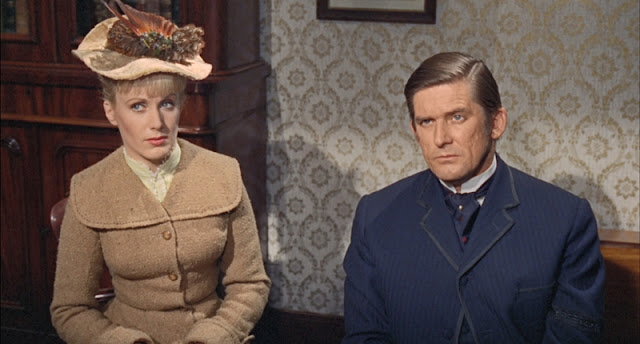
After the untimely death of his brother Charles (David Baron),
Captain Harry Spalding (Ray Barrett) and his wife Valerie (Jennifer Daniel)
inherit the elder Spalding’s modest estate, Larkrise. They arrive in the
village to an icy reception from the suspicious residents, who fear “the black
death,” which has claimed a handful of other lives. Only barkeep Tom Bailey (Michael
Ripper) extends a hand of friendship to the perplexed couple. They soon
encounter theologian Dr. Franklyn, who’s settled in the sleepy Cornish village
after traveling in the Far East. He lives with his reclusive daughter Anna
(Jacqueline Pearce), holding dominion over her… but why? The answer could be Captain
Spalding’s undoing.
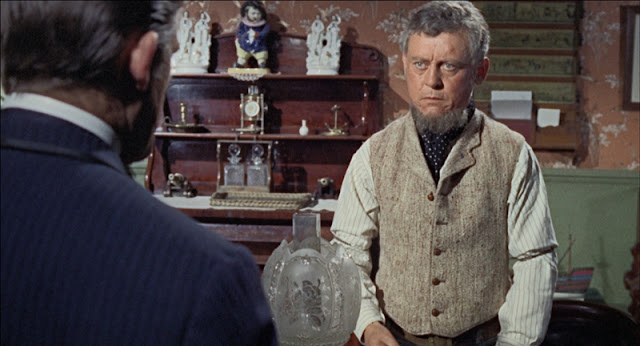
Our main protagonists, Harry and Valerie, are about as
vanilla as you can get. If you want any spice, look no further than the
exemplary supporting performances, especially by Hammer’s Swiss Army Knife in
residence, Michael Ripper,
as pub owner Tom Bailey.* In most other movies, it would be a thankless, insubstantial
role, but Ripper imbues the part with depth, warmth and unexpected humor – a testament
to his formidable talent. Tom shows Spalding and his wife compassion when most
of the villagers turn their backs, and becomes the hero Spalding couldn’t be.
To her credit, Valerie (Jennifer Daniel) is a stronger female character,
compared to most other Hammer heroines of the period. Instead of shrieking in hysterics,
she remains calm in the face of adversity. Despite the danger, she rises to the
challenge on multiple occasions. When her husband is envenomated, she promptly treats
his wound, and ventures in his place to the perilous Franklyn residence.
* Fun Fact #4: Ripper biographer Derk Pykett commented, “It’s
a role that could have easily been overplayed, or gone by hardly unnoticed. But
the Rip plays the role perfectly, with just the right amount of humor and dread
that makes barkeep Tom Bailey a memorable character.”
John Laurie provides another noteworthy supporting
performance as “Mad” Peter,* the town eccentric. He’s at once beloved by the townsfolk
but written off because he’s a nonconformist (seeing and hearing what others
ignore). While he provides some much-needed levity to the film, he much more
than comic relief. It’s too bad he’s afforded so little screen time, because he
almost deserved his own movie.
* Side Note: I couldn’t help but speculate if Mad Peter was
the ancestor of another cinematic doomsayer, Crazy Ralph from the first two
installments of the Friday the 13th Franchise.
Dr. Franklyn (Noel Willman) is the most enigmatic character,
initially unlikeable but ultimately sympathetic. We eventually come to learn what
a terrible burden he carries, with no means of righting the wrongs he’s
committed. Haunted by his indiscretion after traveling to Borneo to pursue the
mysteries of an elusive cult, the Ourang Sancto, Franklyn, now a puppet of the mysterious
Malay (Marne Maitland), is responsible for his daughter’s present condition,

Jacqueline Pearce, probably best known today for her role as
the scheming villainess Servalan in the TV show Blake’s 7,
will likely surprise some viewers, playing such a sensitive, tragic figure as
Anna Franklyn. She endures a seemingly uncurable affliction: undergoing a
transformation into a deadly snake woman. Kept in isolation by her father, she
longs for companionship, keeping a room full of small animals as “pets.”* Her relationship
with Dr. Franklyn is best described as contentious. In one scene, she plays the
sitar for her guests, Captain Spalding and Valerie, only to have it unceremoniously
smashed over the fireplace by her father.
* Fun Fact #5 (MINOR SPOILER): Pet lovers will be relieved
to know that Valerie’s adorable kitten featured in the beginning of the film
does not become reptile food, but survives the (literally) fiery conclusion.
Roy Ashton used care when applying Pearce’s reptile makeup,
which she didn’t tolerate well (he claimed the actress was claustrophobic). The
makeup might appear crude* by today’s standards, but it does the job. Anna, in
reptile form,** is genuinely scary as depicted, emerging from the shadows or in
quick cuts, compensating for the limitations of the makeup. The dreadful effects
of the Reptile’s venom are manifested in three progressively hideous stages,
with the skin of the victims turning black and green, blood running from their
eyes, and froth foaming at the mouth.
* Fun Fact #6: Ashton used papier mâché for the shed skin
Dr. Franklyn discovers in his daughter’s bed.
** Fun Fact #7: After being unimpressed by some of the rushes
(raw, unedited footage) of Jacqueline Pearce in makeup, Hammer ordered
re-shoots (something almost unheard of for the thrifty production company).
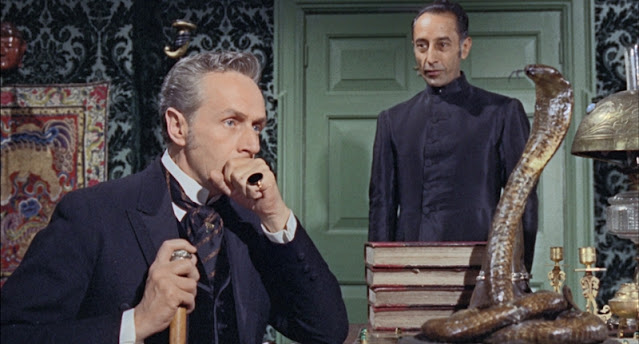
The Reptile’s theme about a threat from the East, is undeniably
steeped in xenophobia, with a curse by an Eastern shaman, known only as “The
Malay” (Marne Maitland). While the film sets up Dr. Franklyn as the victim, he imposed
himself on a culture that didn’t want him there (“…my research into the
primitive religions of the East”), unfortunately resulting in his daughter paying
an unfathomable price. The filmmakers were sure to keep The Malay as
one-dimensional as possible, so he appeared unsympathetic and more monstrous
than the creature he helped create. He poses as Franklyn’s servant, but the
reverse is true, with Franklyn inextricably indebted to the strange man. It’s
only a smoke screen, however, to distract us from a greater truth. Franklyn, a colonial,
was an interloper in an indigenous society he didn’t respect and knew little about.

The Reptile transcends its second-billing leanings, ingeniously
obscuring its low-budget origins, and veering in unexpected directions (such as
Tom Bailey’s heroism). It also stands apart from many other Hammer horror
films, featuring an original creature that was created for the movie, and not a
retread of a Universal property. One of the Blu-ray commenters asserted that it
wasn’t much of a mystery who the eponymous creature was, but I don’t think that
was ever the point. It’s simply an entertaining, and frequently scary yarn, perfect
for Saturday matinees and rainy days.
Sources for this article: The Hammer Story, by Marcus
Hearn and Alan Barnes; The Hammer Vault, by Marcus Hearn; Hammer
Glamour, by Marcus Hearn; Hammer Films: The Unsung Heroes, by Wayne
Kinsey; Micheal Ripper: Unmasked, by Derek Pykett, Shout Factory Blu-ray
Commentary by Steve Haberman, Ted Newsom, and Constantine Nasr


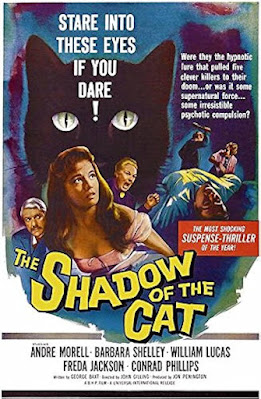



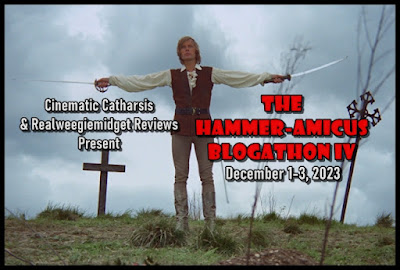
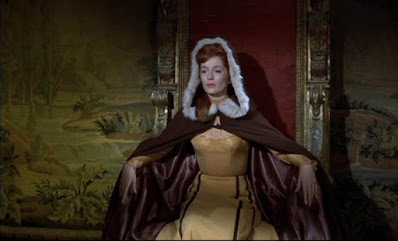


.JPG)

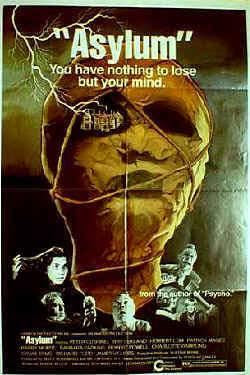





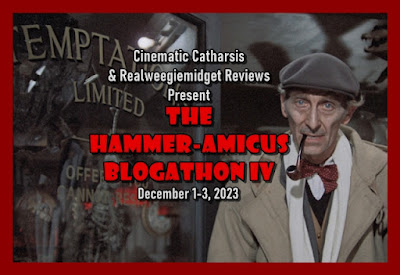
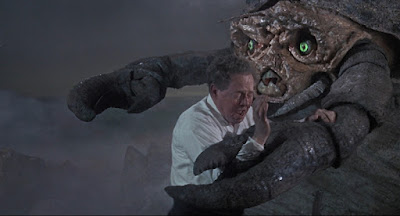
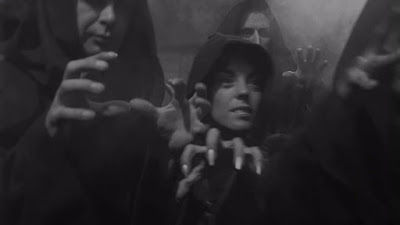



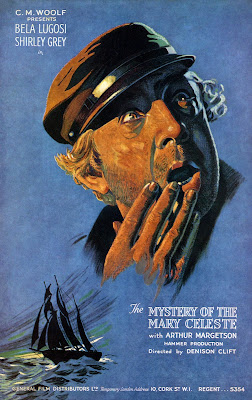


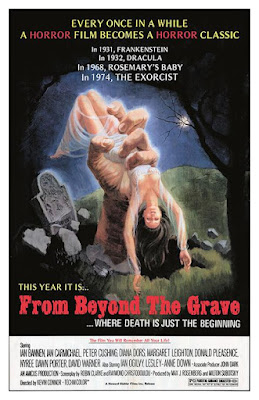

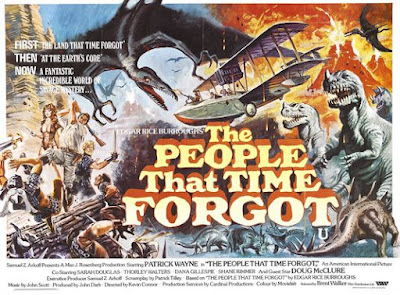

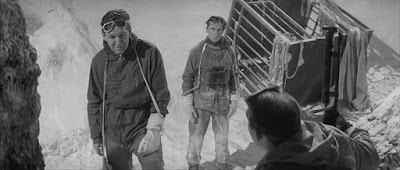
.JPG)
